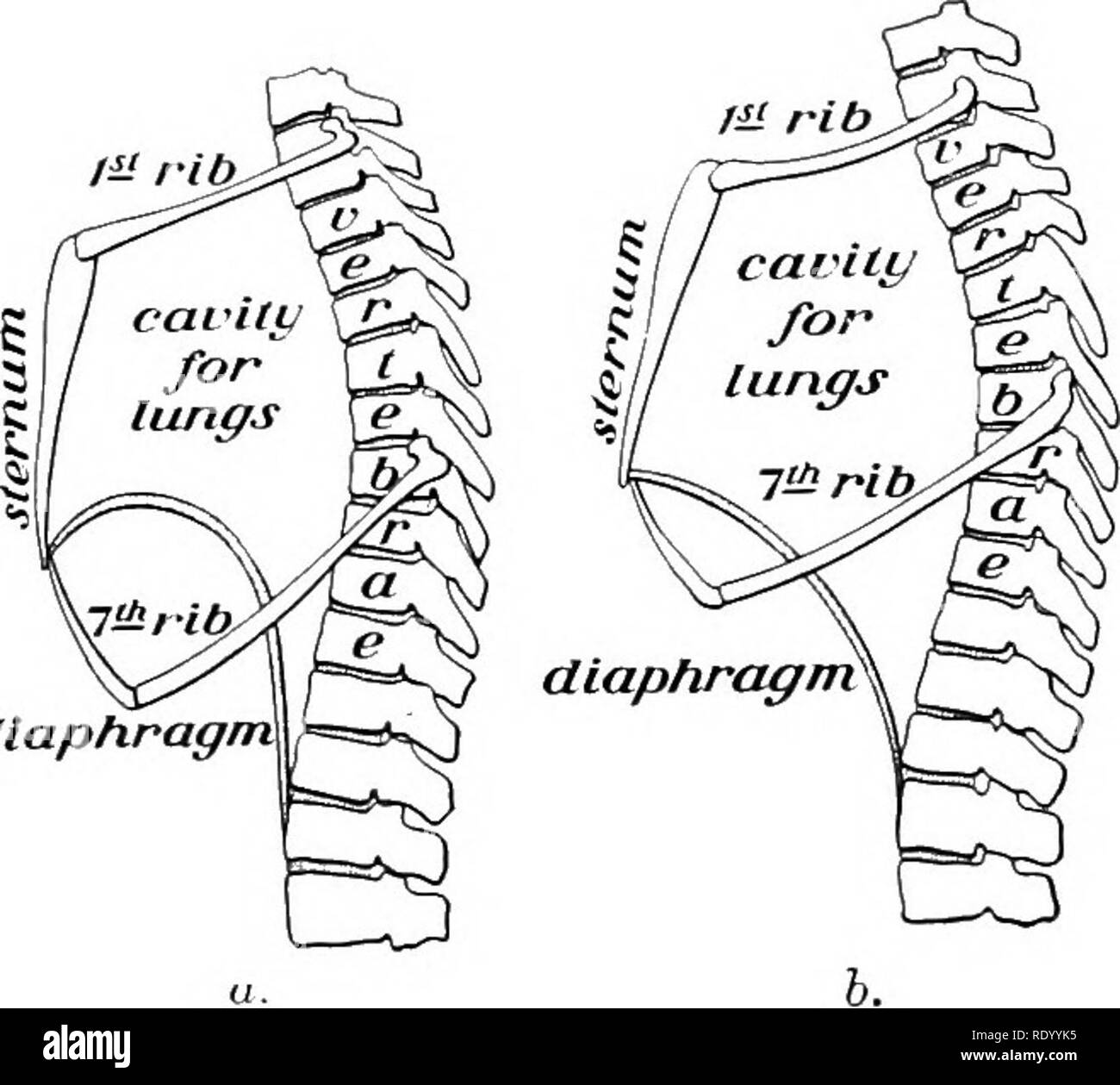. Essentials of biology presented in problems. Biology. 384 RESPIRATION AND EXCRETION. dlaphragi Diagram showing portion of diaphragm and ribs in (a) inspiration ; (b) expiration. the chest cavity larger. The lungs, which lie within this cavity, are filled by the air rushing into the larger space thus made. An expiration is simpler than an inspiration, for it requires no muscular effort; the muscles relax, the breastbone and ribs sink into place, while the dia- phragm returns to its orig- inal position. A piece of apparatus which illustrates to a de- gree the mechanics of breathing may be made

Image details
Contributor:
The Book Worm / Alamy Stock PhotoImage ID:
RDYYK5File size:
7.1 MB (244.6 KB Compressed download)Releases:
Model - no | Property - noDo I need a release?Dimensions:
1666 x 1499 px | 28.2 x 25.4 cm | 11.1 x 10 inches | 150dpiMore information:
This image is a public domain image, which means either that copyright has expired in the image or the copyright holder has waived their copyright. Alamy charges you a fee for access to the high resolution copy of the image.
This image could have imperfections as it’s either historical or reportage.
. Essentials of biology presented in problems. Biology. 384 RESPIRATION AND EXCRETION. dlaphragi Diagram showing portion of diaphragm and ribs in (a) inspiration ; (b) expiration. the chest cavity larger. The lungs, which lie within this cavity, are filled by the air rushing into the larger space thus made. An expiration is simpler than an inspiration, for it requires no muscular effort; the muscles relax, the breastbone and ribs sink into place, while the dia- phragm returns to its orig- inal position. A piece of apparatus which illustrates to a de- gree the mechanics of breathing may be made as follows : Attach a string to the middle of a piece of sheet rubber. Tie the rub- ber over the large end of a bell jar. Pass a glass Y tube through a rubber stop- per. Fasten two small toy baUoons to the branches of the tube. Close the small end of the jar with the stopper. Adjust the tube so that the balloons shall hang free in the jar. If now the rubber sheet is pulled down by means of the string, the air pressure in the jar is reduced and the toy balloons within expand, owing to the air pressure down the tube. When the rubber is allowed to go back to its former position, the balloons collapse. Rate of Breathing and Amount of Air Breathed. — During quiet breathing, the rate of inspiration is from fifteen to eighteen times per minute ; this rate largely depends on the amount of physical work per- formed. About 30 cubic inches of air are taken in and expelled during the ordinary quiet respiration. The air so breathed is called tidal air. In a " long breath, we take in about 100 cubic inches in ad- dition to the tidal air. This is called complemental air. By means of a forced expiration, it is possible to expel from 75 to 100 cubic inches more than tidal air; this air is called reserve air. What remains in the lungs, amounting to about 100 cubic inches, is called the residual air. The value of deep breathing is seen by a glance at the diagram. It is only by this means